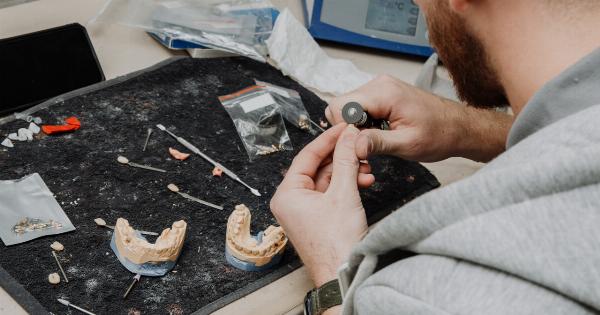A hip replacement is a surgical procedure in which a damaged or diseased hip joint is replaced with a prosthetic implant.
This procedure is typically performed to relieve pain and improve mobility in individuals suffering from conditions such as arthritis or hip fractures. Over the years, advancements in surgical techniques and implant materials have led to unprecedented outcomes in hip replacement surgeries. In this article, we will explore some of these remarkable outcomes and their impact on patients’ lives.
The Evolution of Hip Replacement
Hip replacement surgery has come a long way since it was first introduced in the early 1960s. Initially, the procedure involved removing the entire hip joint and replacing it with a metal or plastic prosthetic.
However, this approach often resulted in limited range of motion and early implant failure.
In the following decades, major breakthroughs occurred in both surgical techniques and implant design. Surgeons began using minimally invasive procedures, which involved smaller incisions and reduced tissue trauma.
This approach not only resulted in shorter recovery times but also decreased the risk of complications such as infection or dislocation.
Moreover, the materials used for hip joint replacement have also significantly improved. The introduction of high-performance ceramics and advanced polymers has led to more durable and biocompatible implants.
These materials are now able to mimic the natural movement of the hip joint, allowing patients to regain their mobility with realistic and pain-free movements.
Enhanced Precision with Computer-Assisted Surgery
Advances in technology have further revolutionized the field of hip replacement surgery. Computer-assisted navigation systems are now used to enhance the precision and accuracy of implant placement.
These systems use real-time imaging to guide surgeons, ensuring optimal positioning of the prosthetic components.
Computer-assisted surgery not only improves the longevity of the implant but also reduces the risk of complications such as leg length discrepancy or improper alignment.
By enabling surgeons to achieve a near-perfect fit, patients experience better functional outcomes and decreased post-operative pain.
Rapid Recovery and Rehabilitation
In the past, hip replacement surgery required lengthy hospital stays and extended rehabilitation periods. However, recent advancements have paved the way for rapid recovery and rehabilitation protocols.
Minimally invasive surgical techniques, combined with optimized pain management strategies, have shortened hospital stays to a mere few days. This means patients can return to their daily activities and regain their independence more quickly.
Additionally, physical therapy programs tailored to specific patient needs have been developed.
These programs focus on improving strength, flexibility, and balance, allowing patients to regain their mobility and resume their regular activities as soon as possible.
Personalized Implants for Better Outcomes
Every patient’s anatomy is unique, and one-size-fits-all approach may not always yield the best results.
Recognizing this, healthcare professionals are now utilizing advanced imaging and 3D printing technologies to create personalized hip implants.
By precisely matching the patient’s bone structure and correct any deformities, personalized implants provide a better fit, reduce the risk of implant failure, and improve overall patient satisfaction.
These customized implants also aid in maintaining the natural biomechanics of the hip joint, resulting in more natural movements and increased longevity of the implant.
Improved Pain Management and Patient Satisfaction
Effective pain management is essential for a successful recovery after hip replacement surgery. Traditionally, opioids have been the primary form of pain relief.
However, the opioid crisis has prompted healthcare providers to explore alternative pain management techniques.
Today, a multimodal approach is often adopted, combining various non-opioid medications, nerve blocks, and regional anesthesia techniques.
This not only reduces the dependence on opioids but also ensures better pain control and fewer side effects for patients.
Furthermore, with advancements in pre-operative planning and patient counseling, expectations and outcomes are better aligned. Patients are now well-informed about the procedure, potential risks and benefits, and realistic recovery timelines.
This improved communication leads to higher patient satisfaction rates and reduced anxiety levels.
Long-Term Results and Lifespan of Hip Implants
Thanks to the continual advancements in hip replacement techniques and implant materials, the long-term results of hip replacements have vastly improved. Modern hip implants have a considerably longer lifespan than their earlier counterparts.
Studies have shown that more than 90% of hip implants last for at least 15 years, and many can endure for up to 25 years or more.
This extended longevity reduces the need for revision surgeries and allows patients to enjoy an active and pain-free lifestyle for a more significant portion of their lives.
Conclusion
Hip replacement surgery has undergone a remarkable transformation over the years, resulting in unprecedented outcomes for patients.
From minimally invasive techniques and improved implant materials to computer-assisted surgery and personalized implants, the advancements in hip replacement have revolutionized the field.
The enhanced precision, rapid recovery, and tailored treatment plans have significantly improved patient satisfaction rates and overall quality of life.
With ongoing research and technological advancements, the future of hip replacement surgery holds even more promise for patients seeking relief from hip joint pain and mobility issues.




























